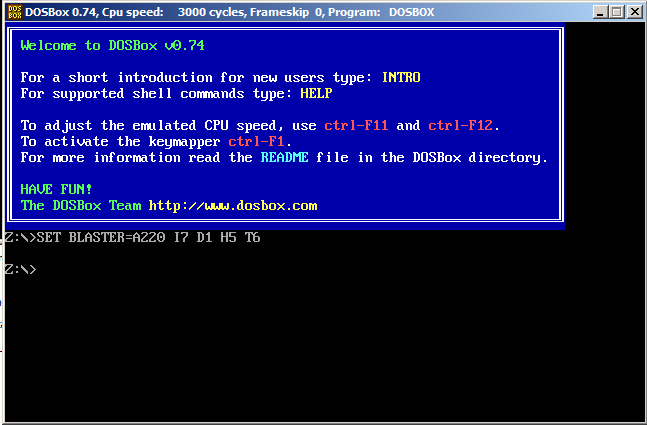Install Windows 95 Using Dosbox
Reshebnik po matematika dlya tehnikumov yakovleva 1. Notes You will need a copy of the Windows 95.

As the Windows 95 project started to come together, I was approached to undertake a special project: Run Windows 3.1 in an MS-DOS virtual machine inside Windows 95. This was the ultimate in backward compatibility, along multiple axes. First of all, it was a demonstration of Windows 95's backward compatibility by showing that it could even use an emulated MS-DOS virtual machine to run the operating system it was designed to replace. Second, it was the ultimate backward compatibility.
If you had a program that simply wouldn't work with Windows 95 for whatever reason, you could fire up a copy of Windows 3.1 in a virtual machine and run the program there. To use it, you installed Windows 3.1 and Windows 95 into separate directories, and then made a few edits to the Windows 3.1 SYSTEM.INI file to replace the mouse and serial drivers with special versions.
Ran into the same problem initially. You have to load MS Dos before all of that so Windows 95 can install off of it. (boot 622c.img). After DOS is loaded, don't do the whole fdisk thing - simply continue to mount d as. Win95_en and c as hdd-1gb.img. I've tried every which way to install Windows 95 on DOSBox using this description and it.
There were some other preparatory steps that had to be done, but eventually you got to the point where you could double-click the Windows 3.1 icon, and up came Windows 3.1 in an MS-DOS virtual machine. Although you could in theory run Windows 3.1 in a window, the experience was pretty bad in practice for a variety of reasons. Computer systems of that era simply didn't have the computing horsepower to render the video fast enough. And you wanted keyboard hotkeys like Alt+ Tab to switch among your Windows 3.1 windows, rather than treating Windows 3.1 as one giant program to be switched into or out of. Running Windows 3.1 as a program inside Windows 95 served as a convincing technology demonstration, but the feature was cut shortly after it came together. One reason is that. There was no integration between Windows 3.1 and Windows 95.
If you copied something to the Windows 3.1 clipboard and then switched back to Windows 95, then tried to paste from the clipboard, you didn't get what you copied from Windows 3.1, because Windows 3.1 and Windows 95 had separate clipboards. Similarly, if you had a Word document with a live link to an Excel spreadsheet, and you opened the Word document in Windows 3.1 but the Excel spreadsheet in Windows 95, not only did the live link not work, but the copy of Word running in Windows 3.1 would get a file sharing violation when it tried to access the Excel spreadsheet, resulting in confusing error messages. Because even though they ran in separate virtual machines, they shared a file system. But perhaps the biggest reason for the feature to be cut was that its presence would undermine the compatibility story of Windows 95. Windows 95 was intended to be maximally backward compatible with all your Windows 3.1 programs. The compatibility would be so great you would never turn back. If there were this 'Run Windows 3.1 in an MS-DOS virtual machine' feature, it would be an admission that we failed: We gave you a way to turn back.
Somebody managed to dig up this unfinished feature from a leaked build, so. (The feature didn't make it very far past the phase, so don't expect to be impressed by the user experience.). In a someone related vein, there is a guy who is writing an emulator that lets you run 16-bit Windows applications on modern Windows. You rename your 16-bit application to MyApp.exe16, and his application is registered to handle the the extension. He virtually loads the 16-bit image, and maps all the imports to stub functions that turn around and call the real WinApi functions: – MessageBox – CreateWindow – etc The program, written in C#, is a 16-bit processor emulator.